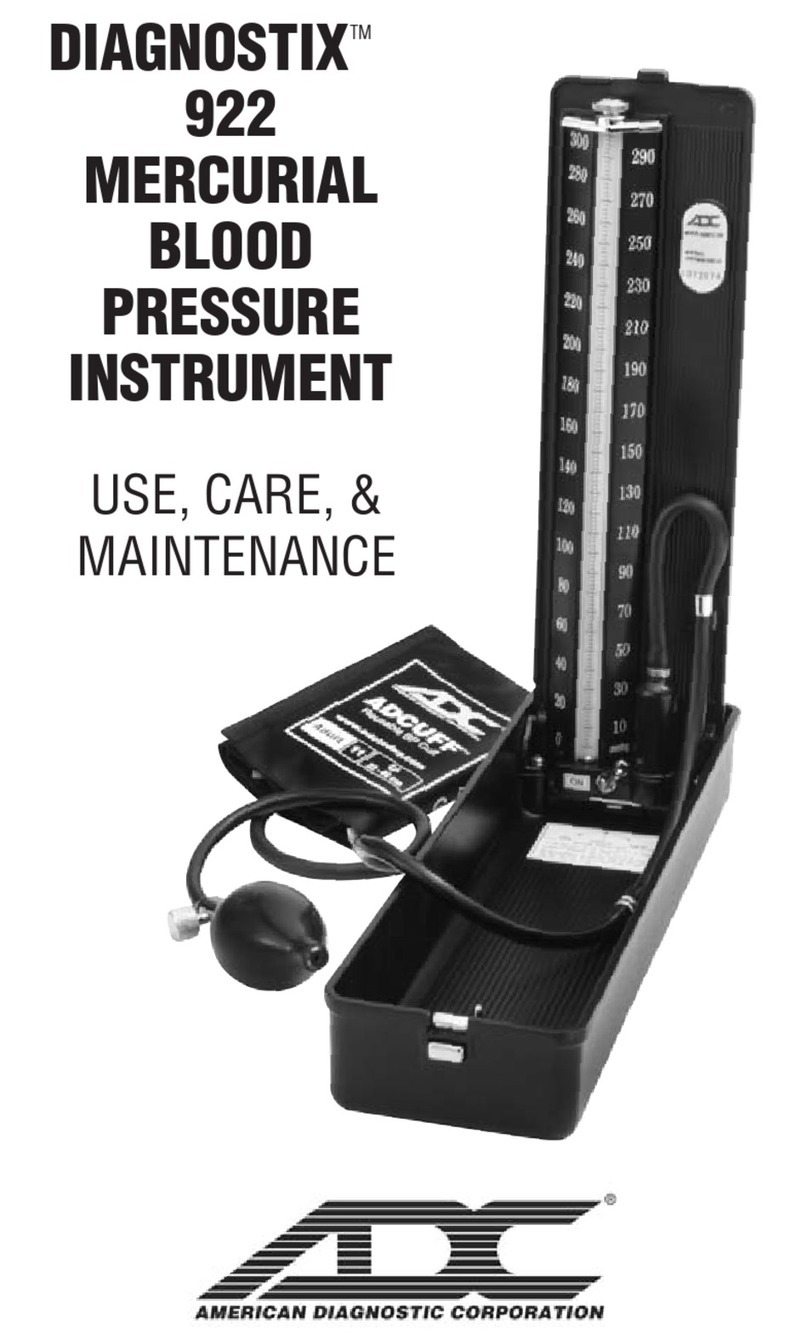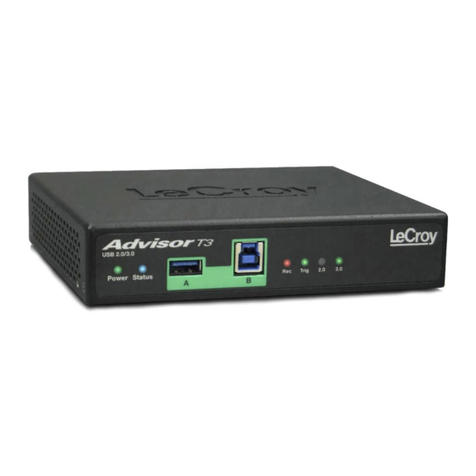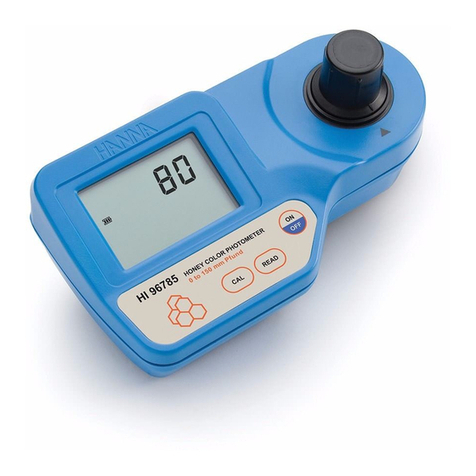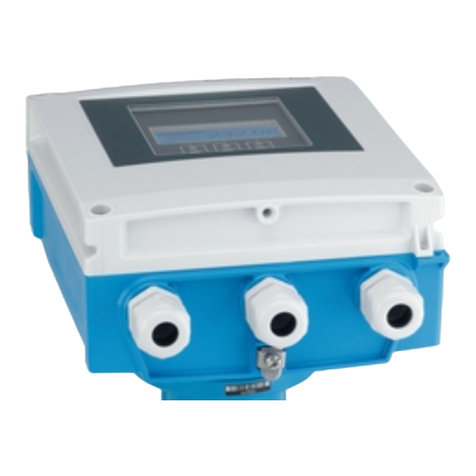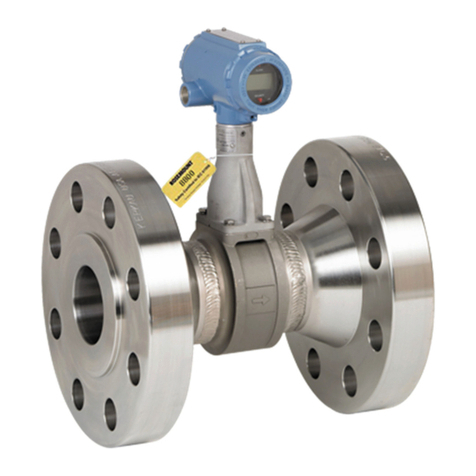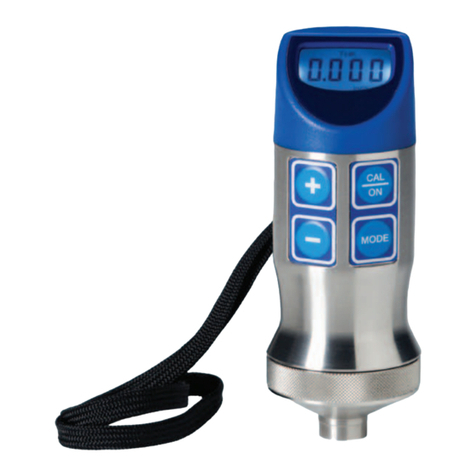Water Specialties Propeller meter ML03 User manual

30119-02 Rev. 2.6/07-09
1
WATER SPECIALTIES
3255 WEST STETSON AVENUE
HEMET, CALIFORNIA 92592-7799 U.S.A.
24” - 54”
MAIN LINE METERS
MODELS
ML03, ML07, ML11, ML15, ML19, ML21, ML23, MLT1
OPERATION AND MAINTENANCE MANUAL
PARTS LIST
FEATURING:
*STANDARD TOTALIZER ASSEMBLY
*CERAMIC BEARING CARTRIDGE PROPELLER
*ONE PIECE SEPARATOR/SPINDLE AND THREADED REVERSE THRUST BEARING CARTRIDGE
PHONE:
FAX:
VISIT OUR WEBSITE:
951-652-6811
951-652-3078
www.mccrometer.com

30119-02 Rev. 2.6/07-09
2
Copyright © 2005 McCrometer. All printed material should not be changed or altered without permission of McCrometer. The published technical data and instructions are subject to change without
notice. Contact your McCrometer representative for current technical data and instructions.
WARRANTY
This Warranty shall apply to and be limited to the original purchaser consumer of any McCrom-
eter product. Meters or instruments defective because of faulty material or workmanship will
be repaired or replaced, at the option of McCrometer, free of charge, FOB the factory in Hemet,
California, within a period of one (1) year from the date of delivery.
Repairs or modifications by others than McCrometer or their authorized representatives shall
render this Warranty null and void in the event that factory examination reveals that such repair
or modification was detrimental to the meter or instrument. Any deviations from the factory
calibration require notification in writing to McCrometer of such recalibrations or this Warranty
shall be voided.
In case of a claim under this Warranty, the claimant is instructed to contact McCrometer, 3255
W. Stetson Ave., Hemet, California 92545, and to provide an identification or description of the
meter or instrument, the date of delivery, and the nature of the problem.
The Warranty provided above is the only Warranty made by McCrometer with respect to its
products or any parts thereof and is made expressly in lieu of any other warranties, by course of
dealing, usages of trade or otherwise, expressed or implied, including but not limited to any implied
warranties of fitness for any particular purpose or of merchantability under the uniform commer-
cial code. It is agreed this Warranty is in lieu of and buyer hereby waives all other warranties,
guarantees or liabilities arising by law or otherwise. Seller shall not incur any other obligations
or liabilities or be liable to buyer, or any customer of buyer for any anticipated or lost profits,
incidental or consequential damages, or any other losses or expenses incurred by reason of the
purchase, installation, repair, use or misuse by buyer or third parties of its products (including
any parts repaired or replaced); and seller does not authorize any person to assume for seller any
other liability in connection with the products or parts thereof. This Warranty cannot be extended,
altered or varied except by a written instrument signed by seller and buyer.
This Warranty gives you specific legal rights, and you may also have other rights which vary from
state to state.
McCrometer reserves the right to make improvements and repairs on product components which
are beyond the Warranty period at the manufacturer’s option and expense, without obligation to
renew the expired Warranty on the components or on the entire unit. Due to the rapid advancement
of meter design technology, McCrometer reserves the right to make improvements in design and
material without prior notice to the trade.
All sales and all agreements in relation to sales shall be deemed made at the manufacturer’s
place of business in Hemet, California and any dispute arising from any sale or agreement shall
be interpreted under the laws of the State of California.

30119-02 Rev. 2.6/07-09
3
MAIN LINE METER
INSTALLATION
I.UNCRATING. When uncrating the meter, any damage due
to rough or improper handling should be reported to the
transportation firm and McCrometer. If for any reason it
is determined that the unit or parts of the unit should be
returned to the factory, please contact McCrometer for
clearance prior to shipment. Each unit must be properly
crated to prevent any further damage. The factory assumes
no responsibility for equipment damage in return shipment
due to improper packaging. The shipping crate contains the
following items:
Main Line Meter Assembly with
Standard Totalizer............................................................1
Mounting Equipment as required......................................-
Operation and Instruction Manual....................................1
Tool T-2402X-1 ...............................................................1
II.INSTALLATION of McCrometer Main Line Meters varies
depending upon the type and model of meter selected for
each application. The meter must have a full flow of liquid
for proper accuracy. The meter installations fall into three
basic categories:
1. FLANGED TUBE METERS can be installed exactly as you
would install any short length of flanged pipe. Flanged ends
are standard pattern and drilling for any meter size.
2. PLAIN END TUBE METERS can be installed similar to
replacing a short length of plain end pipe in the line by
either welding, or by using one of a variety of pipe couplings
available. NOTE: Meter head assembly (#13) should be
removed before welding. (See step IV.)
3. WELDING SADDLE METERS can be installed on an exist-
ing pipeline by cutting a hole of proper size and welding a
meter saddle (furnished with the meter) to the pipe. The
installation steps outlined below should be followed carefully
to achieve proper mounting of the meter:
A. ALIGN the cutout template in the desired position for the
meter on the pipe. Make certain that the center line of the
pipe and the center line marked on the template are parallel
with each other. Some people prefer to use the saddle as
the template.
B. SCRIBE the pipe along the line specified for your meter size
cutout.
C. CUT OUT the section of pipe within the scribed line and
remove all burrs, slag, and rough edges from the inside and
outside of the cutout section.
D. STRAIGHTENING VANES are recommended when there
is less than ten pipe diameters of straight pipe (no fittings
or obstructions) directly upstream from the meter location.
Straightening vanes are available from the factory and when
required should be installed in the following manner, prior
to welding the saddle to the pipe:
a.) HOLD the vanes on the outside of the pipe ten
MAIN LINE METER
INDEX
I. UNCRATING
II. INSTALLATION
1. Flanged Tube Meters
2. Plain End Tube Meters
3. Welding Saddle Meters
A. Align
B. Scribe
C. Cut Out
D. Straightening Vanes
a.) Hold
b.) Mark
c.) Insert
E. Welding Saddle
F. Meter Assembly
III. METER SERVICE SCHEDULE
IV. METER HEAD ASSEMBLY
V. WORKING AREA
VI. TOTALIZER ASSEMBLY
1. Bonnet Mounting Screws
2. Totalizer
3. Totalizer Change Gears
4. Totalizer Drive Magnet
VII. GEARBOX
VIII. VERTICAL SHAFT ASSEMBLY
IX. MITER GEAR FRAME ASSEMBLY
1. Driven Miter Gear Assembly
2. Drive Miter Gear Assembly
3. Components
X. PROPELLER ASSEMBLY
1. Propeller Removal
2. Reverse Thrust Bearing Cartridge
3. Water Lubrication
4. Ceramic Bearing Cartridge
5. Spindle Ceramic Sleeve
6. Separator/Support Spindle Assembly
7. Propeller Installation
8. Thrust Bearing Cartridge Assembly
9. Propeller Bearing
XI. INSPECTION
XII. REASSEMBLY
1. Miter Gear Frame Assembly
2. Gearbox
3. Vertical Shaft Assembly
4. Totalizer Drive Magnet Assembly
5. Totalizer Base Cup
6. Bonnet Assembly
7. Propeller Assembly
8. Meter Head Gasket

30119-02 Rev. 2.6/07-09
4
(10) inches upstream from the center of the cutout
opening. The vanes must be parallel to the center line
of the pipe and should be equally spaced radially 120
degrees apart.
b.) MARK the pipe around the straightening
vane bolts and burn or drill holes in the pipe where
marked.
c.) INSERT the vanes into the pipe through the
saddle cutout opening with the bolts protruding
through the holes. Place seal (stainless steel with
rubber) washers over each bolt, directly against the
pipe. Brass washer should be placed between the
washer and the nut. Secure nuts to hold vanes to
the pipe. Nuts, bolts and washers not supplied. The
vanes can be welded to the pipe if desired. NOTE:
Meter head assembly (#13) should be removed before
welding. (See step IV.)
E. WELDING SADDLE should be centered over the cutout
section of the pipe. Make certain that no part of the pipe
protrudes past the inside edge of the welding saddle. Tack
weld the saddle to the pipe prior to welding a continuous
bead around the saddle. NOTE: Meter head assembly (#13)
should be removed before welding. (See step IV.)
F. METER ASSEMBLY should be placed in the line with the
propeller nose facing the upstream flow in the pipe. Use
care when installing the meter not to damage the propeller
as it passes through the saddle opening. The meter head
gasket should be inspected for any sign of damage and
replaced if necessary before installing the meter. Tighten
the meter head bolts securely.
MAIN LINE METER
OPERATION AND MAINTENANCE MANUAL
III.MCCROMETER products have been carefully designed to
be as maintenance free as possible. Periodic preventive
maintenance, however, is highly recommended and should
be practiced according to schedule to assure continuous
accuracy and trouble-free performance of your propeller
meters. The maintenance and inspection procedure can also
be used as a guide to locating a problem in the unit that
may be the cause of abnormal meter operation.
Routine preventative maintenance should be performed on all
meters, which includes cleaning and an inspection of the
propeller and its bearing. The intervals between inspections
depend on the water quality and the usage of the meter.
The initial inspection should be performed after one to two
years of service, to determine the period between future
inspections. After five to ten years, the complete meter
should be inspected to insure years of dependable service.
IV.METER HEAD ASSEMBLY (#13) should be removed from
the service line by removing the meter head bolts (#53) and
lifting up the rear (downstream) portion of the meter head
(#13), carefully pulling the assembly back (downstream) and
up at the same time to allow the propeller (#40) to clear
the inside of the meter saddle and be lifted free. Inspect
the meter head gasket (#52) for any sign of damage and
replace if necessary. Replace the meter head assembly
(#13) with a dummy cover plate if the service line is to
remain in operation.
V.WORKING AREA chosen for disassembly and reassembly of
the internal meter components should be clean to reduce
the chance of dust or dirt particles being introduced into
the meter mechanism.
VI.TOTALIZER ASSEMBLY (#4) service procedure should
include cleaning and inspection of the unit noting any exces-
sive wear on the change gear (#7 & #8) that may lead to
operational problems in the unit.
1. BONNET MOUNTING SCREWS (#3) should be removed
and the entire bonnet (#1) lifted off of the meter.
2. TOTALIZER (#4) is contained within the totalizer bonnet
(#1) and held in place by a base cup (#5). It should not
be necessary to remove the totalizer (#4) during inspection;
however, removal of the base cup (#5) is necessary for
inspection of the totalizer change gears (#7 & #8). Removal
of the base cup (#5) can be accomplished by inserting a
small screwdriver into the two cutouts and prying upward
under the edge.
3. TOTALIZER CHANGE GEARS (#7 & #8) should be in-
spected for any sign of wear. Both the A-(drive) gear and
B-(driven) gear are attached to the lower portion of the
totalizer assembly (#4). Spin the floating totalizer driven
magnet in the center of the totalizer bottom (#4) to make
certain it spins freely without bind or drag. The bottom of
the totalizer has the letter “A” molded next to the A-drive
gear shaft, and the letter “B” next to the B-driven gear
shaft.
4. TOTALIZER DRIVE MAGNET ASSEMBLY (#12) located
in the meter head (#13) at the top of the vertical shaft
assembly (#14) should be checked and adjusted if neces-
sary to position it 1/16 inch below the top surface of the
meter head (#13). Adjustments can be made by loosening
the socket head set screw in the side of the totalizer drive
magnet assembly (#12), and sliding it up or down the verti-
cal shaft (#14) as desired. Always be sure the set screw
is tightened into the flat on the vertical shaft (#14).
VII.GEARBOX (#17) on McCrometer meters is sealed and filled
with gearbox oil to assure the long life and proper operation
of the parts contained in the miter gear frame assembly
(#21). Before disassembling the lower meter assembly,
the oil must be emptied out of the gearbox (#17). Vertical
shaft assembly (#14) must be removed before the gearbox
oil can be drained.
VIII. VERTICAL SHAFT ASSEMBLY (#14) is pulled directly out
the top of the meter after removing two screws (#16) inside
the meter head (#13). Spin the upper bearing assembly
(#15) gently, checking for any sign of wear. Inspect the
vertical shaft assembly (#14) to be sure it is not bent or
damaged. To drain gearbox oil, turn meter over onto the
meter head (#13) and drain oil into a container.

30119-02 Rev. 2.6/07-09
5
IX.MITER GEAR FRAME ASSEMBLY (#21) can be pulled out of
the back of the gearbox (#17) after removing four screws
(#33). Spin the driven magnet (#24) to make sure the unit
runs freely and inspect the teeth on both the drive (#26)
and the driven (#27) miter gear assemblies for any sign of
excessive wear. If the assembly spins freely and the miter
gears (#26 & #27) are not worn, there should be no further
inspection or disassembly of the unit. Should this service
procedure show that the unit does not spin freely or that
the miter gears (#26 & #27) are worn, the miter gear frame
assembly (#21) should be disassembled as the following
steps indicate and all worn or damaged parts replaced.
1. DRIVEN MITER GEAR ASSEMBLY (#27) can be removed
by loosening the allen head set screw, located on the side
of the gear hub, and pushing the driven miter gear shaft
(#29) out of the assembly. Note the location of the shim
washer (#28), if any, to be sure it is repositioned properly
when reassembling the miter gear frame assembly (#21).
When reassembling be sure the set screws go into recess in
the miter gear shafts (#24 & #29), or damage could result.
Be sure clevis end of the driven miter gear shaft (#29) is
at the same end as the miter gear is located or the meter
will subtract from the totalizer.
2. DRIVE MITER GEAR ASSEMBLY (#26) can be removed
by loosening the allen head set screw, located on the side
of the gear hub, and pulling the driven magnet and shaft
assembly (#24) out the front of the miter gear frame (#22).
Note any shim washer (#28) that may be positioned behind
the drive miter gear (#26) when removing the shaft (#24).
3. COMPONENTS of the miter gear frame (#22) as well as
the gearbox (#17) should be completely inspected at this
point of disassembly. Each part of the miter gear frame
assembly (#21) should be carefully inspected to determine
the origin of any operational problem and those parts that
are damaged or worn should be replaced. Clean the parts of
the unit and reassemble reversing steps (1) and (2) above.
X.PROPELLER ASSEMBLY (#39) inspection includes cleaning
the ceramic sleeve bearing (#41), separator assembly (#34),
drive magnet (#43), and the propeller assembly (#39).
1. PROPELLER REMOVAL can be accomplished by first re-
moving the thrust bearing cartridge assembly (#50). Loosen
the set screw (#49) in the side of the nose of the propel-
ler. Remove the thrust bearing cartridge (#50) by turning
it counterclockwise while holding the propeller in place.
2. REVERSE THRUST BEARING CARTRIDGE (#46) must
now be removed. Turn the propeller (#40) so that the al-
len wrench clearance hole is lined up with the set screw in
the side of the reverse thrust bearing cartridge (#47). The
location of the set screw is marked by a small hole drilled
in the face of the reverse thrust bearing cartridge. With a
5/64 inch allen wrench, loosen the set screw (#47) in the
reverse thrust bearing cartridge (#46) two to three turns,
which will allow the cartridge to be unscrewed without dam-
aging the spindle thread. NOTE: If the bearing area appears
to be clogged with dirt or sediment, making it difficult to
locate the set screw (#47) or to allow the allen wrench to
fit into the set screw socket, then the bearing area should
be flushed out with water. Insert Tool T-2402X-1 into the
propeller through the threaded nose. The tabs in the tool
should engage in the screwdriver slot in the end of the
reverse thrust bearing cartridge (#46). Remove the propeller
assembly (#39) and reverse thrust bearing cartridge (#46)
by turning Tool T-2402X-1 counterclockwise unscrewing
the reverse thrust bearing cartridge (#46) from the spindle
(#35). The propeller assembly with reverse flow cartridge
will now slide off the spindle. WARNING: If the reverse
thrust cartridge does not unscrew easily, it may be because
the set screw was not unscrewed enough. If unscrewing
the reverse flow cartridge is continued with the set screw
binding on spindle thread, damage to thread could occur.
3. WATER LUBRICATION of the ceramic sleeve bearing
(#36) is achieved by means of two openings in the end of
the thrust bearing cartridge (#50) which allows air to be
purged from the bearing area. These should be cleared of
any foreign material by running a small wire through the
holes on either side of the screwdriver slot.
4. CERAMIC BEARING CARTRIDGE (#41) and drive mag-
net (#43) should be cleaned of any foreign material and
inspected for damage. Using a bottle brush, thoroughly
clean the ceramic bearing surface (#41) and the magnet
inside diameter (#43). After cleaning the propeller, flush the
inside out with water. The outside surfaces of the propel-
ler should also be cleaned to assure a smooth, unrestricted
flow across the surface of the propeller. Do not use an
oil-based solvent in cleaning, as damage to the assembly
could occur.
5. SPINDLE CERAMIC SLEEVE (#36) and the O.D. or surface
of the separator (#35) should be cleaned and inspected for
any substantial amount of wear. The thrust bearing (#50)
should be checked for any damage. If it is determined that
the spindle ceramic sleeve (#36) or separator (#35) are worn
sufficiently, the separator/support spindle assembly (#34)
should be replaced.
6. SEPARATOR/SUPPORT SPINDLE ASSEMBLY (#34) can
be removed for replacement by removing the four mounting
screws (#37) which thread into the drop pipe. Separator
o-ring (#38) should be replaced and the new o-ring (#38)
covered with a thin coat of silicone grease. The separa-
tor/support spindle assembly (#34) can then be replaced in
the front of the drop pipe (#17) with a firm push, gently
rotating the assembly at the same time. Replace and tighten
the four mounting screws (#37).
7. PROPELLER INSTALLATION is accomplished by following
these steps: a) The reverse thrust cartridge set screw
(#47) should be protruding out of the reverse thrust bear-
ing cartridge so it will not bind up on the spindle thread.
NOTE: Look through the end of the propeller and hole in
the reverse thrust cartridge to be sure the set screw is not
showing. b) Slide the propeller assembly onto the support
spindle (#18) until the reverse thrust bearing cartridge (#46)
contacts the threads on the end of the spindle (#35). Using
Tool T-2402X-1, thread the reverse thrust bearing cartridge
onto the spindle. If you feel any resistance when threading

30119-02 Rev. 2.6/07-09
6
the reverse thrust cartridge on, stop at once and check to be
sure the set screw is not binding on the thread. Be careful
not to cross-thread the reverse thrust bearing cartridge.
Thread the reverse thrust bearing cartridge (#46) onto the
spindle (#35) until the trailing edge of the propeller contacts
the drop pipe (#17). Set the proper end play by inserting a
5/64” allen wrench into the reverse thrust bearing set screw
(through the side of the propeller) and loosen the reverse
thrust bearing cartridge (#46) 1/2 turn counterclockwise.
Tighten the set screw in reverse thrust bearing cartridge.
There should be approximately .020” clearance between the
drop pipe (#17) and trailing edge of the propeller when the
propeller in pulled forward (away from the drop pipe). The
propeller must not contact the drop pipe.
8. THRUST BEARING CARTRIDGE ASSEMBLY (#50) should
be inspected for damage and replaced in the nose of the
propeller. The thrust bearing cartridge (#50) is used to
adjust the amount of longitudinal end play of the propel-
ler assembly on its spindle (#35), which should be about
1/64 inch. End play can be adjusted by turning the thrust
bearing cartridge assembly (#50) clockwise until it tightens
against the end of the support spindle (#35), then turning
thrust bearing cartridge (#50) counterclockwise 1/8 of a
turn. Tighten set screw (#49). Check the longitudinal end
play of the propeller to insure it’s not excessive and does
not allow the propeller (#40) to contact the drop pipe (#17).
Check the clearance between the propeller (#40) and drop
pipe (#17). The clearance should be approximately .010”
between the drop pipe (#17) and trailing edge of the pro-
peller when the propeller in pushed back (toward the drop
pipe). The propeller assembly (#39) must spin freely.
9. PROPELLER BEARING (#41) can be checked for excessive
radial play by rocking the propeller (#39) gently from side to
side on the spindle (#35). Some play is required for proper
operation of the water lubricated ceramic sleeve bearing.
XI.INSPECTION of all internal meter parts that may be replaced
in the field has been accomplished at this point. Should any
of the meter parts upon inspection, appear to be damaged
or excessively worn, they must be replaced to assure proper
meter operation and prevent further damage.
XII.REASSEMBLY is necessary at this point. Before reassem-
bling any parts, make certain that each is cleaned of any
dust or dirt and properly lubricated. Cost for replacement
parts not covered by warranty are available from current
parts and price list. If it is determined that the meter
should be returned for repair, please notify McCrometer
prior to shipment. Each meter must be properly packaged
to prevent damage to the meter in shipment.
1. MITER GEAR FRAME ASSEMBLY (#21) can be replaced
in the back of the gearbox (#17) with a firm push, gently
rotating the assembly at the same time. Replace the miter
gear frame o-ring (#30) and cover the new o-ring with a
thin coat of silicone grease before replacing the assembly
(#21). Make certain that the assembly is installed in a
position such that the drive clevis portion of the driven miter
gear shaft (#29) can accept the driven clevis portion of the
vertical shaft assembly (#14). Secure with four mounting
screws (#33).
2. GEARBOX (#17) must be filled with three ounces of 10w
mineral oil. A small funnel or an oil can with a small nozzle
will make filling the gearbox (#17) easier. Pour the oil
through the opening in the top of the meter head (#13).
3. VERTICAL SHAFT ASSEMBLY (#14) should be inserted
gently into the gearbox (#17) through the opening in the
top of the meter head (#13). Rotate the shaft gently until
it is engaged in the driven miter gear shaft (#29) of the
miter gear frame assembly (#21). Replace and secure two
screws (#16) that hold the upper bearing (#15) in place.
Do not overtighten the screws (#16) as this could cock
the bearing (#15) and bind the vertical shaft (#14). Turn
the top of the vertical shaft (#14) to check for any bind or
drag. Should any bind or drag be apparent, it can usually be
corrected by adjusting the vertical shaft collar and bearing
assembly (#15). Loosen the set screw (#16) in the side
of the assembly (#15) and slide the shaft (#14) downward
until it rests against the driven miter gear shaft (#29), then
lift up about 1/64 inch. Tighten set screw (#16).
4. TOTALIZER DRIVE MAGNET ASSEMBLY (#12) should be
checked again to make certain it is properly set to drive the
totalizer (#4). (See step VI, 4.)
5. TOTALIZER BASE CUP (#5) can be placed back in the
totalizer bonnet (#1) on the totalizer assembly (#4) after
the desiccant capsule and base cup o-ring (#6) are replaced.
Be sure o-ring (#6) is on base cup (#5) properly.
6. BONNET ASSEMBLY (#1) should be cleaned and replaced
on the meter head (#13). Bonnet o-ring (#2) should be
replaced and the new o-ring (#2) covered with a thin coat
of silicone grease. Secure four screws (#3).
7. PROPELLER ASSEMBLY (#39) should be dipped in water
to lubricate the propeller ceramic sleeve bearing (#41) and
spin the propeller (#40) gently to make certain the meter
operates smoothly and no bind or drag is apparent.
8. METER HEAD GASKET (#52) should be inspected for any
sign of damage and replaced if necessary. The meter can
now be installed in the service line. When replacing the
meter on the line, make certain that the top of the welding
saddle is smooth and free of any foreign material. Make
certain that no foreign materials are attached to the inside
of the service line pipe, as any flow disturbance or obstruc-
tion may affect the accuracy of the meter.

30119-02 Rev. 2.6/07-09
7
NOTES

30119-02 Rev. 2.6/07-09
8
NO. QTY. PART NUMBER DESCRIPTION
1 7-MLT1-* MAIN LINE METER HEAD ASSEMBLY
1 6-4260 TOTALIZER & BONNET COMPLETE (ITEMS 1 THRU 6)
1 7-4260 TOTALIZER & BONNET COMPLETE (ITEMS 1 THRU 8)
1 1 5-4316 TOTALIZER BONNET ASSEMBLY
1 1-4317-3 TOTALIZER BONNET LID (W/PIN)
2 1 1-1551-38 O-RING, TOTALIZER BONNET
3 4 1-1115-10-10 SCREW, BONNET MOUNTING (ea.)
4 1 5-4260 TOTALIZER ASSEMBLY (SPECIFY DIAL)
1 2-2310-‡ DIAL (AS SPECIFIED)
2 1-1118-3-3 SCREW, DIAL MOUNTING (ea.)
1 1-4276 SWEEP HAND
5 1 1-4318 BASE CUP, TOTALIZER
6 1 1-1551-17 O-RING, BASE CUP
7 1 3-4045 A-GEAR ASSEMBLY (SPECIFY # OF TEETH)
8 1 3-4045 B-GEAR ASSEMBLY (SPECIFY # OF TEETH)
12 1 3-2324 DRIVE MAGNET ASSEMBLY, TOTALIZER
13A 1 3-2101-24 METER HEAD (24” - 36”)
13B 1 3-2101-42 METER HEAD (42’ - 54”)
14 1 3-2461-* VERTICAL SHAFT ASSEMBLY
15 1 3-2352 VERTICAL SHAFT COLLAR & BEARING ASSEMBLY
16 2 1-1113-6-4 SCREW, VERTICAL SHAFT COLLAR & BEARING MTG. (ea.)
17 1 3-2460-* DROP PIPE & GEARBOX ASSEMBLY
18 1 1-1551-17 O-RING, DROP PIPE
19 8 1-1251-8-16 BOLT, DROP PIPE MOUNTING (ea.)
20 - 1-1806 VIBRA-TITE, DROP PIPE MTG BOLT
21 1 4-2459 MITER GEAR FRAME ASSEMBLY (ITEMS 22 THRU 30)
22 1 2-2459 MITER GEAR FRAME
23 4 1-1504-2 BEARING, MITER GEAR FRAME (ea.)
24 1 3-2458 DRIVEN MAGNET & SHAFT ASSEMBLY
25 1 2-2354 DRIVEN MAGNET SPACER
26 1 3-2349 DRIVE MITER GEAR ASSEMBLY
27 1 3-2137 DRIVEN MITER GEAR ASSEMBLY
28 2 2-2148 SHIM WASHER (ea.)
29 1 2-2138 DRIVEN MITER GEAR SHAFT
30 1 1-1551-2 O-RING, MITER GEAR FRAME
33 4 1-1103-8-7 SCREW, MITER GEAR FRAME MOUNTING (ea.)
34 1 4-2455-2 SEPARATOR/SUPPORT SPINDLE ASSEMBLY
35 1 2-2455-2 SEPARATOR/SUPPORT SPINDLE
36 1 1-1508-20 CERAMIC SLEEVE FOR SUPPORT SPINDLE
37 4 1-1103-8-7 SCREW, SEPARATOR/SPINDLE MOUNTING (ea.)
38 1 1-1551-24 O-RING, SEPARATOR/SPINDLE
39 1 5-2425-14.0 PROPELLER ASSEMBLY (ITEMS 40 THRU 51)
40 1 3-2425-14.0-T PROPELLER
41 1 4-2426-1 CERAMIC BEARING CARTRIDGE
42 1 1-1116-8-6 SCREW, CERAMIC BEARING CARTRIDGE MTG.
43 1 1-1601-2 DRIVE MAGNET
44 1 1-2428-‡ DRIVE MAGNET RETAINING PLATE
45 2 1-1115-3-18 SCREW, DRIVE MAGNET RETAINING PLATE (ea.)
46 1 3-2402-2 REVERSE THRUST BEARING CARTRIDGE ASSEMBLY
47 1 1-1101-8-5 SET SCREW, THRUST BEARING
48 2 1-1509-1 CERAMIC THRUST BEARING, 3/16” DIA. (ea.)
49 1 1-1125-6 SET SCREW, NYLON TIP
50 1 3-2356 THRUST BEARING CARTRIDGE ASSEMBLY
51 2 1-1510-1 CERAMIC THRUST BEARING, 1/4” DIA. (ea.)
52A 1 1-1557-14 GASKET, METER HEAD (24”-36”)
52B 1 1-1557-24 GASKET, METER HEAD (42”-54”)
53A 12 1-1253-14-13 BOLT, METER HEAD 1 NC x 3 (24”-36”) (ea.)
53B 20 1-1253-15-17 BOLT, METER HEAD, 1¼” NC x 4” (42”-54”)
54A 12 1-1219 NUT, METER HEAD BOLT, 1 NC (24”-36”) (ea.)
54B 20 1-1223 NUT, METER HEAD BOLT, 1¼” NC (42”-54”)
55A 12 1-1301-12-1 WASHER, METER HEAD BOLT, 1” (24”-36”) (ea.)
55B 20 1-1301-14-1 WASHER, METER HEAD BOLT, 1¼” (42”-54”)
- -- 1-1804-2 GEARBOX OIL (16 OZ.)
- 1 1-1607-5 DESICCANT CAPSULE
CONTACT FACTORY FOR PRICES.
When ordering replacement
parts, please specify:
• Meter Size • Meter Model • Meter Serial Number
24”-54” MAIN LINE METERS
MODELS ML03, ML07, ML11, M15, ML19, ML21, ML23, MLT1
PARTS LIST
* INSERT METER SIZE TO COMPLETE PART NUMBER
(USE -24 FOR 24”; -30 FOR 30”, ETC.)
‡ CONSULT FACTORY TO COMPLETE PART NUMBER

30119-02 Rev. 2.6/07-09
9
24”-54” MAIN LINE METERS
MODELS ML03, ML07, ML11, ML15, ML19, ML21, ML23, MLT1
* STANDARD TOTALIZER ASSEMBLY
*CERAMIC BEARING CARTRIDGE PROPELLER
*ONE PIECE SEPARATOR/SPINDLE AND THREADED REVERSE THRUST BEARING CARTRIDGE

30119-02 Rev. 2.6/07-09
10
PROPELLER METER TROUBLE SHOOTING FLOW CHART
METER NOT REGISTERING
IS WATER FLOWING?
IS FLOW RATE ABOVE MINIMUM RE-
QUIRED FOR METER?
REMOVE TOTALIZER, IND./TOT.
OR TRANSMITTER. IS VERTICAL
SHAFT TURNING?
REMOVE METER FROM LINE. IS
DEBRIS BLOCKING PROPELLER?
SPIN PROPELLER BY HAND.
DOES VERTICAL SHAFT TURN?
PROBLEM IS IN LOWER PORTION
OF METER. REPAIR PER MFG.
INSTRUCTIONS OR RETURN TO
FACTORY FOR REPAIR.
NO
NO
NO
YES
NO
CORRECT PROB-
LEM
NO
CORRECT
PROBLEM
NO
APPLY A LIGHT FINGER PRESSURE TO
VERTICAL SHAFT. IS VERTICAL SHAFT
TURNING NOW?
YES
PROBLEM IS IN TOTALIZER,
IND./TOT. OR TRANSMITTER OR
THIER CONNECTION TO VERTICAL
SHAFT. REPAIR PER MFG.
INSTRUCTIONS OR RETURN TO
FACTORY FOR REPAIR.
YES
NO
REMOVE DEBRIS
FROM LINE
YES
METER NOT READING ACCURATELY
IF METER HAS IND./TOT., TIME
TOTALIZER TEST HAND TO CONFIRM
FLOW RATE READING ON INDICATOR.
IF ALL OF THE ABOVE CHECKS OUT,
RETURN METER TO FACTORY TO BE
ACCURACY TESTED.
YES
METER METER
W/VANES W/O VANES
UPSTREAM 5 dia. 10 dia.
DOWNSTREAM 1 dia. 2 dia.
DOES METER HAVE THE REQUIRED
UPSTREAM & DOWNSTREAM
STRAIGHT RUNS OF PIPE?
IS THERE A FULL
PIPE OF WATER?
YES
IS FLOW RATE ABOVE MINIMUM RE-
QUIRED FOR METER?
YES
NO
CORRECT
PROBLEM
CORRECT
INSTALLATION
NO
NO
CORRECT
INSTALLATION

30119-02 Rev. 2.6/07-09
11
SPECIFICATIONS INDEX
A/B
RATIO
CHANGE GEARS
METER SIZE &
MODEL NO.
REGISTRATION
INDICATOR DIAL
GEARING
REPAIR RECORD
SERIAL NUMBER PURCHASE DATE
ODOMETER READING
NOTES:
DATE REPAIR METER LOCATION COMMENTS

30119-02 Rev. 2.6/07-09
12
WARNING:
BEFORE REMOVING THE METER HEAD FROM THE PIPELINE THE
WATER MUST BE TURNED OFF AND PRESSURE MUST BE RE-
LIEVED FROM THE LINE. SERIOUS INJURY CAN RESULT FROM
REMOVING A METER HEAD UNDER PRESSURE.
METER SHOULD NOT BE TURNED UPSIDE DOWN AS OIL WILL
DRAIN OUT OF THE GEARBOX AND NOT PROVIDE PROPER LU-
BRICATION TO THE MITER GEARS AND BEARINGS.
Other manuals for Propeller meter ML03
1
This manual suits for next models
7
Table of contents
Other Water Specialties Measuring Instrument manuals
Popular Measuring Instrument manuals by other brands
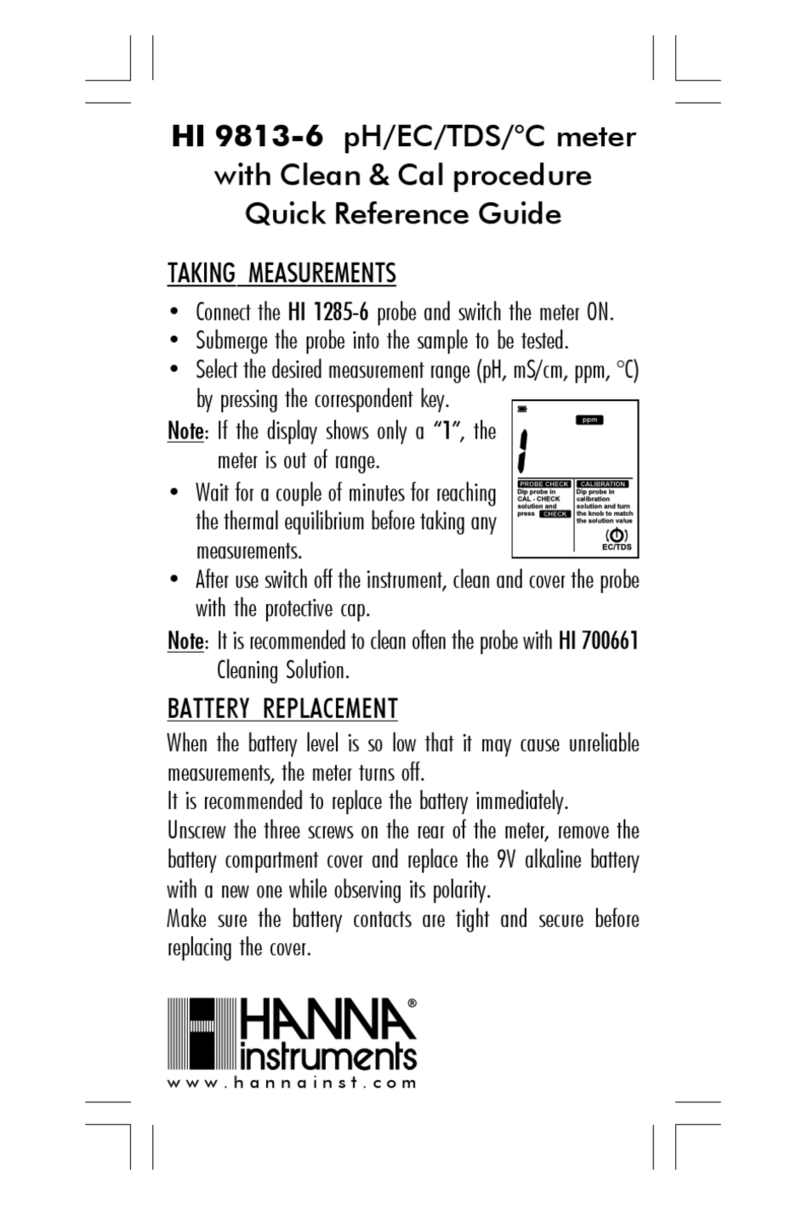
Hanna Instruments
Hanna Instruments HI 9813-6 Quick reference guide

Badger Meter
Badger Meter ORION SE Installation data
Inficon
Inficon BPG402-SE operating manual

Endress+Hauser
Endress+Hauser Cerabar M PMC51? Cerabar M PMP51 operating instructions
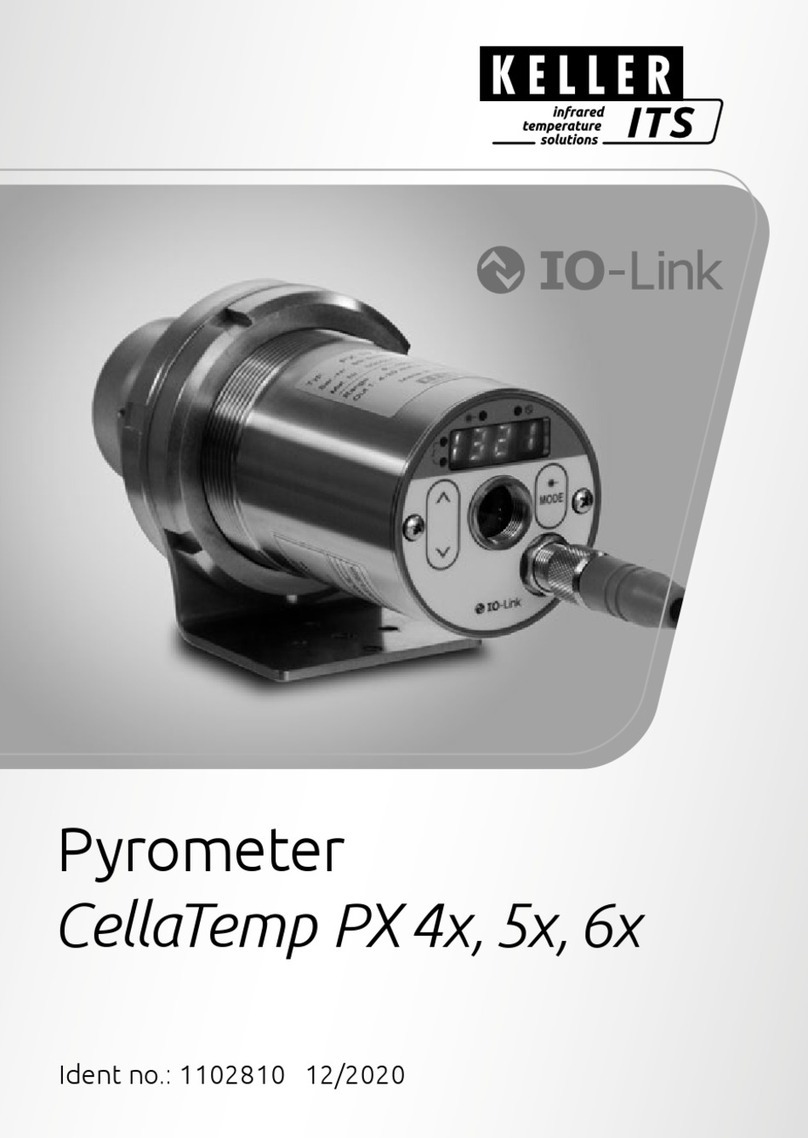
Keller
Keller CellaTemp PX 4 Series operating instructions

Nordson
Nordson DAGE XD7600NT operating instructions





